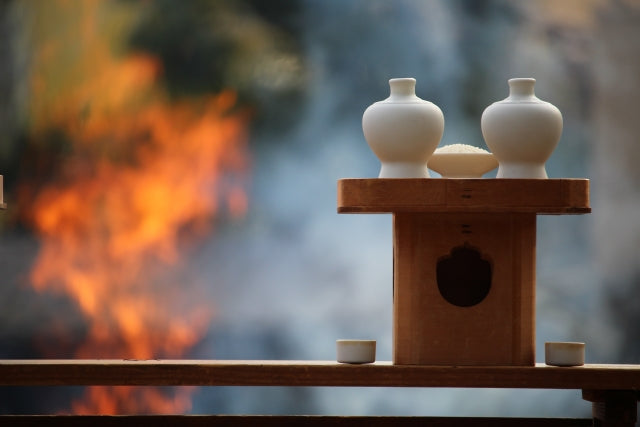
The origin of shinto offerings

Receiving and connecting with the power of Japanese kami - festivals and "second encounter”
Since ancient times, the Japanese have cherished the festivals of each of the four seasons.
During festivals, also called matsuri, the Japanese entertain the deities with sake and food used as offerings. These offerings are then eaten by the festival participants.
The festival participants then enjoy the sake and food that have been offered to the deities together. This is called the "second meeting".
In Shinto, the offerings have a special power, called "the blessing of the deities". It is said that eating food containing the power of the deities allows one to receive their blessings and strengthen the ties between humans and the deities. Just as eating a meal with people builds relationships, so does this process.
Offerings do not only take place during matsuri. They also punctuate the daily life of Japanese people.
For example, if you follow us on Instagram, you must have already heard about Kagamimochi.

1500 years of prayers and the ultimate food offering
As mentioned above, the "ultimate food offering" is called Higoto Asayu Omikesai (日別朝夕大御饌祭). It is performed at the Ise Shrine for Amaterasu Omikami, the most important goddess in Shinto. The components of this offering meet special criteria in order to be offered. The water is drawn from the Kaminomii Shrine, which is located outside the Ise Jingu Shrine. The rice, vegetables and salt are grown in special fields.
Finally, Shinto priest prepares the fire. This process is called Imibiyaden (忌火屋殿).
The food is prepared in the morning and evening. So the ceremony is held twice a day, morning and evening, 365 days a year for about 1500 years, in the Divine Meal Hall, also called Mikeden (御饌殿) located outside the shrine.
I think that offerings are a way to express in a visible form our feelings towards the deities.
Knowing that it is already difficult to express our feelings as human beings, it is even more difficult when it comes to the spiritual world.
That is why we Japanese express our sincerity as much as possible. The Japanese "culture of hospitality" probably comes from this mindset.
Text and photos by Misa Kikuiri, writer for 供TOMO
--------------------------------
★Envy to learn more about Shinto? You can read our articles about the history of Shinto part 1 and 2 !
★TOMO offers products inspired by Shinto offerings. If you are looking for a tasty coffee alternative made in Japan, click here or on the button below!


